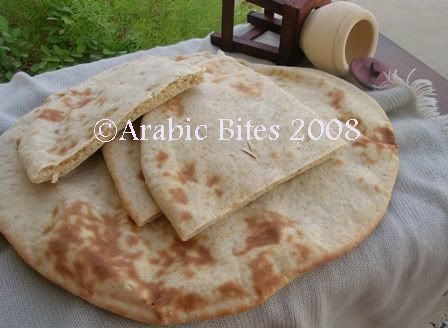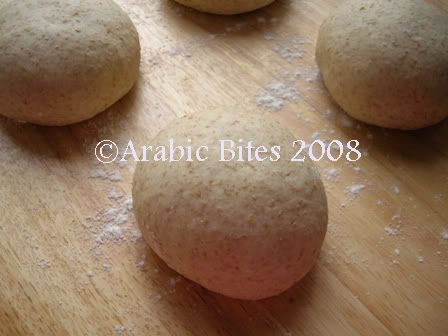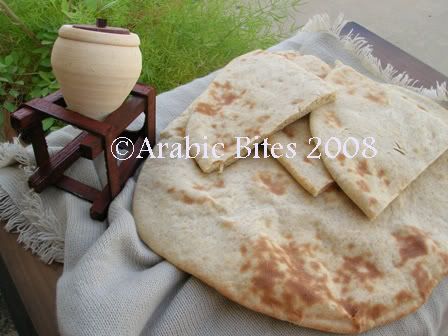OK! OK! OK...I had this idea to use pesto, olives, & cheeses, you know, yum Italian flavored stuff, in a bread loaf, and I thought I'd just use the rolled-out, then rolled-up technique, but then I thought of trying this:
B’s Five Layer Hidden Focaccia½ the dough of Floyd’s Italian Bread…nice wet flippy dough…1 jar Organic Bella Terra Sun-Dried Tomato Pesto, 3 oz.7 pimento stuffed green olives, sliced¼ t. fennel seeds, toasted & slightly crushed4 hunks sun-dried tomatoes, chopped2.2 oz. freshly grated Parmesan Reggiano1 oz. fresh mozzarella piecesDivide dough into 3 pieces, 2 large & 1 small…Stretch or pull one of the large pieces to about 10 - 11 inches in diameter …place on peel on cornmeal sprinkled parchment…spread ½ of the pesto, ½ of the olives, ½ of the fennel seeds, ½ of the tomatoes, & ½ of the cheeses onto the dough within ½ inch of the edge…Begin to preheat the oven, stone, & water pan to 550 degrees, convection…Stretch or pull the small piece of dough to just barely cover the toppings…spread on the rest of the toppings, in the same order as above, to the edge of the second dough…Stretch or pull the last large piece of dough the same size as the original…mist the bare edge of the original dough with water…place the last piece of dough on & press & seal the edges…check for large air pockets between the top dough & the toppings underneath & poke a hole to release the air…My prebaked loaf was about 1 inch high x 12 inches diameter…it sat for about 15 minutes while the oven finished heating…Thoroughly mist the loaf with water…slide the parchment & loaf onto the stone, pour 1 c. hot water into water pan & mist the loaf again…mist 4 more times, 30 sec. apart…lower temperature to 450 degrees, convection (lower temperature 25 degrees if no convection)…bake 22 minutes, rotating once…207 degrees internal temp…
My baked loaf ended-up measuring 2 inches high x 11 inches in diameter… I did not slash it, it didn’t split as it baked and only leaked slightly on the top in 2 places…the crust was dark,  dough
dough loaf
loaf loaf
loaf crumb
crumb crumb
crumb crumb
crumb crumb layersthin and crispy, the crumb was airy & moist and the” toppings” were oh so flavorful…I guess, if anything, I would add more olives & cheese...
crumb layersthin and crispy, the crumb was airy & moist and the” toppings” were oh so flavorful…I guess, if anything, I would add more olives & cheese...
NOW IF I CAN JUST GET THE PICS IN HERE, NEVER DONE THAT!...




 Pain à l'Ancienne
Pain à l'Ancienne





 Silesian Light Rye Crumb
Silesian Light Rye Crumb dough
dough loaf
loaf loaf
loaf crumb
crumb crumb
crumb crumb
crumb crumb layersthin and crispy, the crumb was airy & moist and the” toppings” were oh so flavorful…I guess, if anything, I would add more olives & cheese...
crumb layersthin and crispy, the crumb was airy & moist and the” toppings” were oh so flavorful…I guess, if anything, I would add more olives & cheese...




